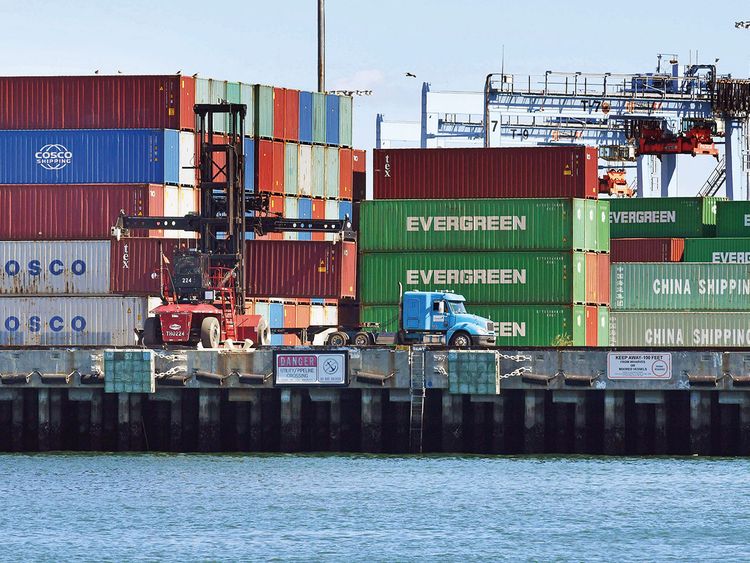UAE and Saudi Businesses Pivot Sourcing Strategies Amidst Rising Red Sea Tensions
As geopolitical tensions escalate in the Red Sea, businesses in the United Arab Emirates (UAE) and Saudi Arabia are facing the impact of increased shipping costs and extended delivery times from Europe. Recent military actions by the US and the UK against Houthi targets have triggered a surge in shipping costs, particularly on routes from Europe to UAE ports, prompting businesses to swiftly reassess their sourcing and transportation strategies
The latest incidents in the Red Sea have resulted in a significant uptick in shipping costs, with businesses witnessing an increase of more than $1,000 per TEU (20-foot container) on routes from Europe to UAE ports. This surge has reverberated across various sectors, affecting shipments from Dubai to Jeddah and prompting businesses to seek immediate solutions.
Diversification of Suppliers
To counter the impact of rising costs, UAE businesses that traditionally sourced from Europe are actively exploring alternative suppliers. A notable trend is the engagement of Turkish suppliers to meet short-term requirements. This strategic shift is driven by the urgency to secure crucial supplies until the end of April, especially with Ramadan approaching in mid-March.
Multi-Modal Transportation Strategies
To optimize costs and expedite deliveries, businesses in the UAE and the Gulf are turning to multi-modal transportation strategies. This approach involves a mix of sea and other modes of transport such as rail, trucks, or air, offering faster delivery compared to traditional sea routes, particularly those passing through the Cape of Good Hope.
China-Europe Rail Options
Similar trends are emerging in the goods destined for Europe from Asia. Chinese exporters are actively considering Sino-Euro rail options through the Commonwealth of Independent States (CIS) to expedite orders before the Chinese New Year. The rail service options are gaining popularity due to their ability to provide faster delivery than conventional sea routes.
Impact on UAE to Jeddah Route
Shipping costs on the UAE to Jeddah route have seen a pronounced spike, prompting businesses to explore alternative ways to manage costs and transit times effectively. Multimodal transport has become crucial in this scenario, with an increased focus on overland freight options to Saudi Arabia.
Customs and Overland Freight Options
The unified customs duties between the UAE and Saudi Arabia have provided an opportunity for businesses to consider overland freight options, particularly trucking. This approach not only allows for competitive rates but also ensures effective clearing of customs, enabling a smoother transition of goods between the two countries.
The evolving geopolitical environment in the Red Sea is presenting significant challenges to businesses in the UAE and Saudi Arabia. As shipping costs rise and traditional routes face disruptions, businesses are adopting diversified and multi-modal approaches to sourcing and transportation. This strategic shift is crucial for ensuring supply chain resilience and meeting crucial timelines, especially with Ramadan approaching. The ability to adapt to these challenges will be instrumental in maintaining business continuity and fostering resilience in the face of geopolitical uncertainties.






Kmxgbu
ivermectin 6 mg oral – atacand 8mg us where can i buy tegretol
December 30, 2024Udmfpz
accutane drug – buy dexona for sale order zyvox 600 mg
January 20, 2025Wnamlf
buy amoxicillin pill – ipratropium pills buy combivent tablets
January 20, 2025Eidxay
order zithromax generic – bystolic 20mg pill bystolic 5mg sale
February 3, 2025Fqkvzr
order omnacortil 10mg generic – buy progesterone 200mg pill oral prometrium 200mg
February 4, 2025Gqlpnu
order generic lasix 100mg – betamethasone 20gm oral3 betnovate online order
February 11, 2025Lozxrc
neurontin 600mg cost – gabapentin 800mg usa buy itraconazole 100mg pill
February 11, 2025Qiuqtm
buy generic augmentin for sale – purchase duloxetine duloxetine where to buy
February 16, 2025Mzaanm
order monodox without prescription – buy cheap generic glucotrol glipizide 5mg ca
February 18, 2025Yxfdyl
buy augmentin paypal – order generic amoxiclav cymbalta 40mg generic
February 24, 2025Yicjgt
buy rybelsus cheap – buy cheap generic periactin order periactin 4mg generic
February 26, 2025Bpkapi
buy generic zanaflex over the counter – order tizanidine online cheap order generic hydrochlorothiazide 25 mg
February 28, 2025Bfxsxp
cialis daily cost – tadalafil online buy viagra next day delivery
March 7, 2025Ooevhv
sildenafil pills 50mg – order cialis 20mg sale generic for cialis
March 10, 2025Grcevr
purchase cenforce online – order aralen 250mg generic order glucophage 1000mg sale
March 17, 2025Onhljx
buy atorvastatin online – order lisinopril pill purchase prinivil generic
March 18, 2025Swtvjx
lipitor without prescription – order norvasc 5mg pills buy zestril paypal
March 20, 2025Oogpgg
buy omeprazole without prescription – brand tenormin buy atenolol sale
March 22, 2025Ueuibz
where to buy methylprednisolone without a prescription – pregabalin 150mg pills aristocort 10mg tablet
March 28, 2025Ovedme
oral desloratadine – cost claritin 10mg dapoxetine usa
March 30, 2025Bhqocy
purchase misoprostol online cheap – cytotec over the counter diltiazem medication
March 31, 2025Xrbosl
order acyclovir sale – zyloprim pills crestor 10mg drug
April 6, 2025Yqgxzr
buy motilium cheap – cyclobenzaprine buy online how to buy cyclobenzaprine
April 9, 2025